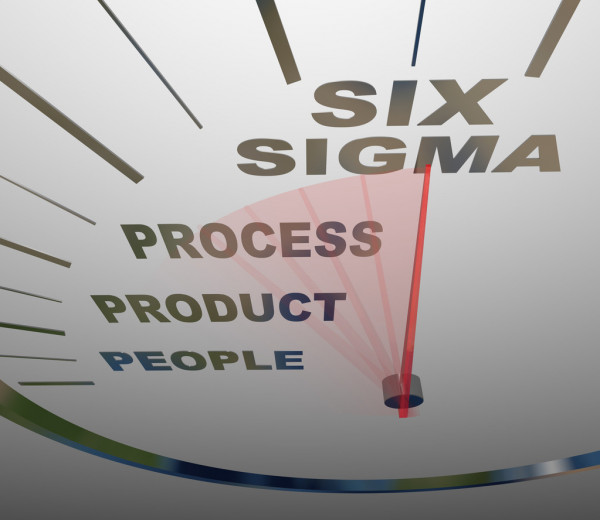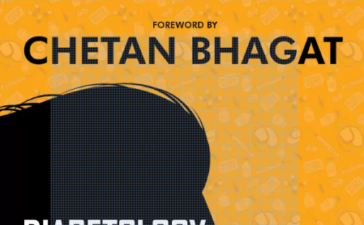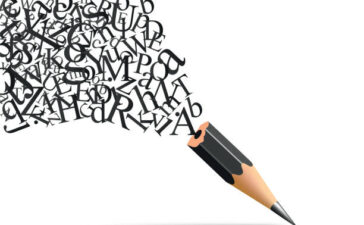Companies like Motorola, Ford, Dell, GE, Wipro have shown the business world, time and again, the need for implementing Six Sigma for error-free and near-perfect execution of key processes. Six Sigma is a vision and philosophy that illustrates the business culture of a company. It is a discipline, a data-driven approach, and methodology for eliminating defects in any process in a product, service, manufacturing, or transaction industry.

Six Sigma originated in America and Lean Six Sigma in Japan. Six Sigma helps in improving the execution of processes whereas Lean Six Sigma helps in eliminating all forms of waste. Each of these two tools, methods has its vision, philosophy, approach but the objectives of both are eliminating waste and creating efficient processes. So most organizations combine both these approaches to get optimum results.
10 of the best books On Six Sigma Green Belt are listed here.

The details of the 10 books (listing is in no particular order or preference and ratings are as per Amazon) are as follows –
1. Six Sigma: A Complete Step-by-Step Guide: A Complete Training & Reference Guide for White Belts, Yellow Belts, Green Belts, and Black Belts by Craig Joseph Setter & The Council for Six Sigma Certification
Ratings – 4.6/5 stars Available in paperback and hardcover
This is the go-to book for all students and professionals of all levels of certification. It offers guidance and practical exercises for both students and professionals. The book focuses on the strategies and tools necessary to support quality improvement initiatives too.
The chapters start with basic concepts and an overview of the methodologies for the aspirants of white and yellow belts. The next couple of units go to a higher level of knowledge that includes computing statistics with software like Excel and Minitab. These are helpful for the Green belt certification. A few units then deal with the advanced level of knowledge and concepts needed for Black belt certification. The rest of the book gives a detailed account of Six Sigma and Lean Six Sigma in different industries.
2. The Six Sigma Handbook: A Complete Guide for Green Belts, Black Belts, and Managers at All Levels by Thomas Pyzdek and Paul A. Keller
Rating – 4.5/5 stars Available in kindle and paperback
The two major features of this book are its details on using the Minitab software for data analysis and secondly, how to recognize a profitable opportunity and maximize resources to ensure the building of a Six Sigma active organization. The book helps understand how organizations improve processes, profitability, sustainability, and long-term growth by implementing Six Sigma.
This resource is a favorite among managers and Lean Six sigma specialists as it explores the philosophy in-depth and problem-solving strategy. It lays stress on data being the best driver of quality improvement. It gives details of DMAIC (define, measure, analyze, improve, control) as a technique of improving on existing processes. Then, the authors propound DMADV ( define, measure, analyze, design, verify) as a technique to design a new product. The reader can access two online quizzes and five videos.
3. The Six Sigma Way: How to Maximize the Impact of Your Change and Improvement Efforts by Peter S. Pande, Robert P. Neuman, and Roland Cavanagh
Rating – 4.2/5 stars Available in kindle and hardcover
This book published in 2000 is known to be one of the definitive books that influenced the world of business and continuous improvement in workplaces. The reprints and editions included lessons learned and myths debunked over the years. It has 17 chapters and includes case studies, roadmaps, and practical guidelines for anyone interested in LSS and change. Being second best in the business world is not an option any longer, these days being the best is the only way to survive. This book gives you that power. Corporate leaders around the world heeded the call and began implementing the tools of this world-changing performance improvement.
Another credit to this book is that it is one of the pioneering works to emphasize the customer-centric approach. Case studies from companies like GE, Motorola, Adobe, Macy, and Starwood have been taken to establish the guidelines, roadmaps to make key decisions based on the Lean Six Sigma methodologies, tools, and techniques.
4. The Certified Six Sigma Green Belt Handbook by Roderick A Munro, Govindarajan Ramu, et al
Rating – 4.4/5 Available in hardcover and paperback
This book prepares the reader for the Six Sigma certification. It is a part of the ASQ (American Society of Quality) series of books on Six Sigma. Each topic is dealt with in detail. The (define, measure, analyze, improve, control) process is explained with insights and clarity. It gives an elaborate explanation of lean and project management, Statistics and data analysis. It is a reference handbook on running projects for those who are already knowledgeable about process improvement and variation reduction.
The book is divided into 6 parts with each part having 5 to 6 chapters. A full sample test, figures, tables, terms, acronyms, processes, reference material, useful files, case studies, blank forms, and appendices make this book very valuable. The CD Rom which accompanies this book has much more than sample questions.
5. A Guide to Six Sigma and Process Improvement for Practitioners and Students: Foundations, DMAIC, Tools, Cases, and Certification by Howard S Gilow, Richard Melnyck, David L Kevine
Ratings- 4.6/5 Available in Kindle and hardcover
This book covers two very important aspects of Six Sigma along with all the other important topics and those are what can Six Sigma do and achieve? The second one is How is Six Sigma executed? The main focus of the book is DMAIC phases and their mastery. Its latest edition has lean and process control applications too. The bonus is the additional chapters on Six Sigma black belt and green belt certifications. It includes practical coverage of Six Sigma statistics and management techniques, from dashboards and control charts to hypothesis testing and experiment design. This book will be an invaluable resource for everyone who is involved in Six Sigma certification or implementation or plans to be a Six Sigma professional. It’s also ideal for students in quality programs; and for those who promote and coordinate Six Sigma at the executive level.
6. Juran’s Quality Essentials: For Leaders by Joseph A. DeFeo and Joseph M. Juran
Rating – 4.3/5 stars Available in kindle and hardcover
It is the most referred book by Quality Management professionals. It motivates the reader to improve quality and performance through a culture of quality. This improves the sustainability of the organization’s financial growth too. “Dr. Juran’s wisdom on quality and management is timeless. The tenets of modern quality that were forged by Dr. Juran in the second half of the 20th century are made contemporary by Joe DeFeo’s practical experience and application of these principles in hundreds of organizations. This book belongs in the library of every leader who strives for world-class performance and wants to understand the concepts, techniques, and tools that will deliver it.” — PAUL BORAWSKI, Chief Executive Officer, ASQ – The Global Voice of Quality
If an organization has its strategic plan in place it means that it can align its goals by removing all those initiatives which don’t contribute positively through quality management. Some other highlights of the book are the quality pointers on product and service development methods, bottom-line performance improvement, and how to use SS and LSS methods, tools, and techniques to manage business processes simply and cost-effectively.
7. Six Sigma Statistics using Minitab 19: Green Belt Edition by Rehman M Khan
Ratings – 4.5/5 Available in kindle and paperback
If the reader is a learner who likes to do and see the results, then this is the book for him or her. It is a teaching guide that helps by using example-based learning. Six Sigma Green and Black belts needed more support to understand the complex statistical techniques used within Six Sigma, but this had to be delivered effectively. The book establishes the need for industrial process improvement and Minitab training to provide Six Sigma Green Belts with the learning support they need to drive Minitab 19. The key features of this book are that it covers all main topics used by Six Sigma Green Belts in easy-to-understand language. Secondly, it uses example-based learning with hundreds of screenshots in the book. If the learner goes to the link provided in the book, he or she will find videos that are a great resource to support the learning process. Numerous examples cover both continuous and attribute data where possible. The data sets for the examples and exercises are available to download from the same link.
8. Rath & Strong’s Six Sigma Team Pocket Guide (GENERAL FINANCE & INVESTING) by Rath and Strong
Ratings – 4.7/5 Available in kindle and spiral-bound
According to the authors of this book, the success of a project depends on the mastering of the team and influence skills. Lack of these skills leads to failure of projects. The failure has nothing to do with the technical tools of Six Sigma. The problem is poor teamwork, internal politics, and bad communication. Six Sigma helps prevent the organizations from falling foul to this failure. Six Sigma team leaders and team members can reverse the trend with the help of this book. This is one of the bestselling Six Sigma books ever published. It shows every project team leader and team member how to gain the interpersonal and political skills needed to make a Six Sigma project a success. Skills like getting buy-in and cooperation from all levels of the organization, how to lead or participate in productive team meetings, and how to plan the people/team side too along with the technical side. What makes it easy to read is its pocketbook format.
9. Learning to See: Value Stream Mapping to Add Value and Eliminate MUDA by Mike Rother, John Shook, Jim Womack, Dan Jones
Rating- 4.5/5 Available in spiral bound
This book has introduced and established the concept of Value stream mapping. It is more of a work-book, that shows the reader how to draw a current-state value stream mapping, then take it to the future-state map using lean concepts and techniques of continuous flow, pull, supermarkets, load-leveling, and FIFO. In the end, it emphasizes the need to implement the future state map as a project that needs management support and involvement. These simple maps – often drawn on scrap paper – showed where steps could be eliminated, flows smoothed, and pull systems introduced to create a truly lean value stream for each product family. It is very useful and insightful especially for those in the manufacturing industry.
The study for this book is based on Toyota’s mapping methodology. This simple tool makes it possible for you to see through the clutter of a complex plant. It enables one to identify all of the processing steps along the path from raw materials to finished goods for each product and all of the information flows going back from the customer through the plant and upstream to suppliers. So it becomes easier to project for the future too. It has drawings, maps(present and future state) for each type of product, and guides on sustainability too. Readers from across the world report that value stream mapping has been an invaluable tool to start their lean transformation and to make the best use of kaizen events. It has sold more than 50,000 copies in the last two years.
10. Statistics for Six Sigma Made Easy! by Warren Brussee
Rating – 4.5/5 Available in kindle and paperback
The tagline of this book title is ‘a plain English guide to solving real-world problems with Six Sigma’. Six Sigma has established a reputation world over as being one of the most effective strategies for improving processes, creating better products, and achieving customer satisfaction. There is a misapprehension that Six Sigma is a complex tool and method to implement but this book helps in demystifying this notion. The book presents a thorough overview of the Six Sigma methodology and techniques for successful implementation, as well as a clear explanation of DMAIC–the problem-solving method used by Six Sigma Greenbelts. It presents the simplified form of the most common Six Sigma tools, basic formulas, tables, statistical problem-solving case studies and a matrix for finding the right statistical tool for the reader’s needs. It is the go-to book for Greenbelt training. The best part is that no background in Statistics or prior knowledge of Six Sigma is needed to understand and start improving quality and initiating cost-saving improvements right away.

Such books help in preparing for the Six Sigma certification easier. The core topics covered in a book make it valuable and worth reading. Some of the topics/areas any good book on Six Sigma will cover are –
- Defining a Six Sigma project
- Six Sigma Fundamentals like DMAIC and DMDAV
- Define
- Measure
- Analyze
- Improve
- Control
- Project management techniques
- Organization and standardization skills
- Quality management
- Tools of Quality management
- Key skills needed for Six sigma work
- Data Analysis tools like Lean, Root cause analysis, Hypothesis testing, and more
- Measurement system analysis and evaluation
- Kaizen, Cost-benefit analysis and control plan
- Maximizing resources
- Building the responsive Six Sigma organization
Three Bonus Books
- The Goal: A Process of Ongoing Improvement by Eliyahu M. Goldratt
A unique, pioneering resource that has been a best-seller from the day it was published. It is a parable of the long-suffering hero overcoming all challenges and becoming the victor with the help of his mentor!
2. The Toyota Way by Jeffrey Liker talks about 14 management principles from the world’s greatest manufacturer. One of its highlights is focusing on the need for high-quality products and services to establish and retain customer loyalty. This book has been highly rated by its readers and is available in the hardcover as well as Kindle version.
3.Six Sigma: An Essential Beginner’s Guide to Six Sigma by Eric Scott is an audiobook. This book is for those who need initiation into Six Sigma and are interested in management, business methodology, and change implementation. It helps the reader understand the path to Six Sigma certification but doesn’t help in preparing for the certification.
A Six Sigma certificate is given high value by the Human Resources department and adds an extra amount to the salary. A range of levels from Six Sigma white belt to Lean Six Sigma Black Belt Mastery certification courses and books to prepare for these certifications are available. Henry Harvin Education offers more than 15 courses of Six Sigma certifications in their Quality Academy which includes a Post Graduation program.
Three of their popular programs are. Three of those are mentioned here –
Lean Six Sigma Green Belt Course
This course trains the participant to apply problem-solving skills by developing analytical thinking skills. It emphasizes the DMAIC techniques (Define, Measure, Analyze, Improve, and Control) https://www.henryharvin.com/lean-six-sigma-green-belt-certification
Lean Six Sigma Yellow Belt Certification
The entry-level in Lean Six Sigma methodology is the yellow belt certification. These professionals lead limited improvement projects or become team members of more complex improvement projects. https://www.henryharvin.com/lean-six-sigma-yellow-belt-certification
Certified Advanced Statistics Six Sigma Executive Course
This certificate helps the professional be eligible for jobs demanding statistical methods and a six sigma background. It improves the CV and Linkedin profile with professional development. https://www.henryharvin.com/advanced-statistics-for-six-sigma-course

Conclusion
“If you only read the books that everyone else is reading, you can only think what everyone else is thinking.” – Haruki Murakami in Norwegian Wood. So select the books wisely according to the course you want to join and the topics covered in it. Try and be individualistic in your selection!
FAQs
Yes, most of them are available if they are published before 2020. Secondly, new editions of these books published after 2019 may not be available in seconds/used ones.
There are five different levels of Six Sigma. They are White Belt which is for beginners. Then the yellow belt. Thirdly the Green Belt. Fourth is the Black belt. The last and highest level is the Master Black Belt.
Some of the jobs available are Mini project Lead, Quality Assurance Executive, Quality Manager, Operations Manager, Process Excellence Manager and more. The level of job depends on the level of Six Sigma certification.
In the present times, when professionals and organizations are striving for sustainability and excellence, it is advisable to get Six Sigma certified. The certification helps you to improve problem-solving skills too.
Yes, they are a resource useful for both students and professionals. They are –
Lean Mastery Collection: 8 Manuscripts: Lean Six Sigma, Lean Startup, Lean Enterprise, Lean Analytics, Agile Project Management, Kanban, Scrum, Kaizen Audible Audiobook – Jeffrey Ries (Author), Sam Slydell (Narrator)
Lean Mastery Collection: 8 Bundle Books. Lean Six Sigma + Analytics + Startup + Enterprise + Agile Project Management + Kanban, Scrum + Kaizen. Audible Audiobook by Michael S. Lean (Author), Xavier York (Narrat
















I found this article on the best books for Six Sigma Green Belt certification extremely helpful. The comprehensive list provided valuable insights into the recommended resources, helping me make an informed choice. Thank you for sharing.
The Best Books Six Sigma Green Belt is an excellent resource for those wanting to gain a Six Sigma Green Belt certification. It provides a detailed overview of the topics covered in the exam and plenty of practice questions to help you prepare. The book was very helpful in my certification process and I highly recommend it.
Best Books Six Sigma Green Belt is an essential resource for anyone looking to get certified in Six Sigma. It provides a comprehensive overview of the key topics related to Six Sigma and is easy to understand. It is a great reference book that can be used again and again.
The Best Books Six Sigma Green Belt guide has been an invaluable resource for me in my journey to become a certified Green Belt. With comprehensive coverage of the Six Sigma methodology, it has enabled me to gain a more thorough understanding of the concepts and processes. The exercises and case studies have also helped me to apply the knowledge in a practical way and prepare for the certification exam.